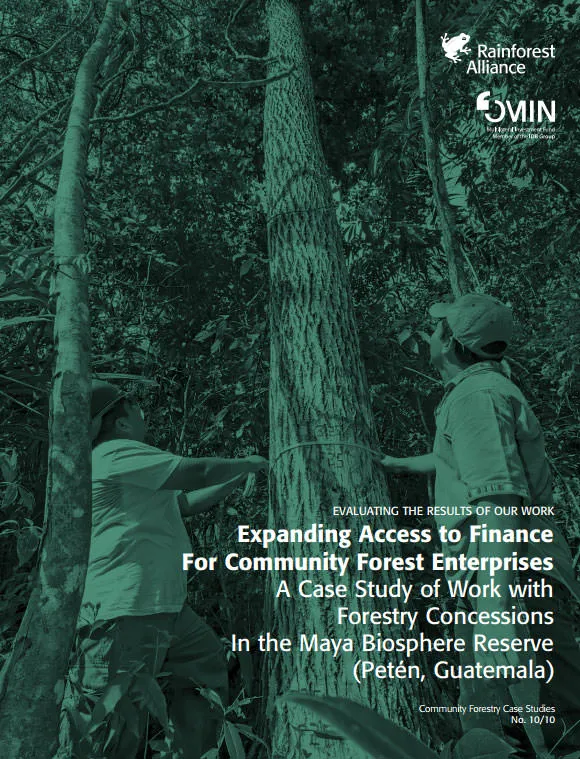Expanding Access to Finance For Community Forest Enterprises in the Maya Biosphere Reserve
A Case Study of Work with Forestry Concessions In the Maya Biosphere Reserve (Petén, Guatemala)
Lack of access to finance is widely cited as a critical bottleneck to improving the competitiveness of community forest enterprises (CFEs). Having capital on hand beyond the rather small savings that most CFEs have is essential to cover annual planning and harvesting expenses, as well as in order to invest in new infrastructure and grow. Typically, financing for CFE operations comes from two or three places: buyer advances, and development aid and/or government subsidy. Buyer advances are notorious for landing CFEs in disadvantageous commercial relationships, hamstringing their ability to turn a profit and invest in enterprise development. While government support and development aid are recognized as fundamental to CFE establishment and early growth, an overreliance on them limits entrepreneurial vision and the prospects for self-sustaining enterprise.
CFE access to credits from financial institutions has historically been limited. Several reasons are usually cited for this. Private banks in particular are reticent to make loans to the forestry sector in general, especially in the tropics, where risks are seen as unacceptably high. Community-run forest enterprises are seen as even more risky, given their complicated systems of governance, lack of collateral, weak administrative capacity and limited experience with credit. On the community side, moreover, there is often considerable aversion to taking on the risk inherent in accessing credit, a dearth of opportunities for loans that are tailored to CFE needs, and competing interests for the use of finance. Taken together, these factors have hindered the creation and uptake of credit mechanisms for CFE development.
In response to these barriers, the Rainforest Alliance has been working in multiple countries with a diversity of partners to structure financial mechanisms specifically for CFEs, and then to support communities to apply for and effectively execute credits. This case study documents the experience doing so in Guatemala, working with CFEs in the Maya Biosphere Reserve (MBR). With support from a previous MIF project, a new line of credit was created with a Guatemalan bank called FIDOSA, specifically targeting forestry producers. Support from the current MIF project allowed Rainforest Alliance to work with CFE partners to access and manage those credits. This work was undertaken in close partnership with the Asociación de Comunidades Forestales de Petén (ACOFOP), and had additional support from USAID.
The central finding of this case study is that CFEs can successfully apply for, execute and repay credits, provided they are supported to make foundational improvements in the areas of legal compliance, transparency, accounting systems and overall financial administration. Since demonstrating compliance in such areas is a requirement of financial institutions, applying for loans can catalyze fundamental change in CFE administration, motivating leadership to invest in key areas like financial planning, bookkeeping and administrative control. Moreover, successful execution and repayment of loans opens the door to even greater opportunities for credit and further investment in CFE growth.
